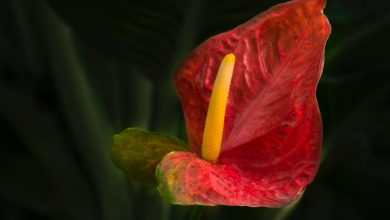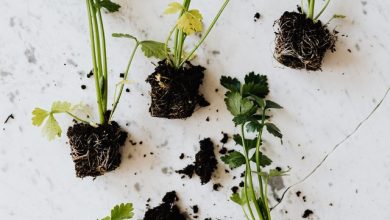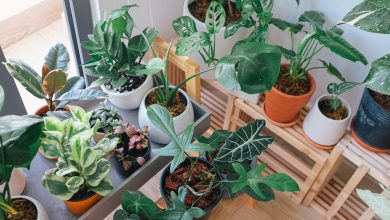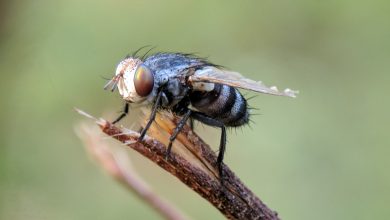Easy-To-Grow Plants For Your Indoor Garden
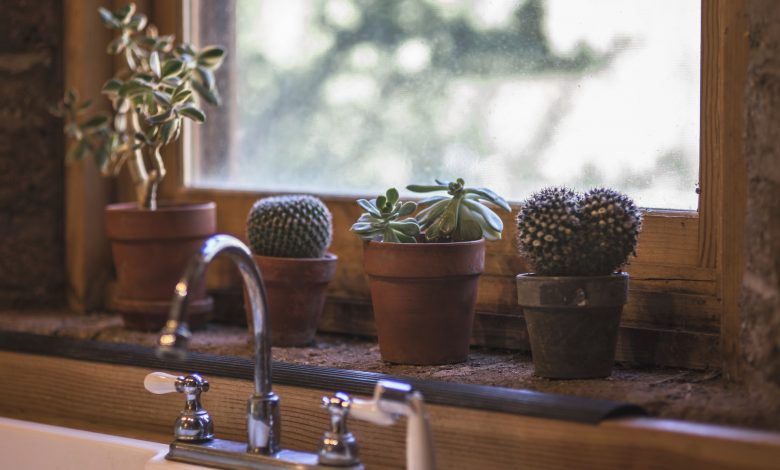
Every gardener or green thumb has had fantasies and dreams of their ideal garden. And you could probably bet that most of these imagined gardens are colossal in size. They come with big and beautiful designs overlooking the sea – a royal garden that’s constantly bathed in warm, fuzzy sunlight.
But alas, for most of us green thumbs, that is just not the gardening reality we live in. Some of us are lucky enough to have even a small plot of soil in our backyard where we can plant a couple of lovely plants, and that’s it. But for many people, especially those who live in the condos or apartment buildings of the big, bustling cities, that’s not even realistic. There is simply no space for even the tiniest outdoor plots in many modern living situations.
So if you’ve got a green thumb but you’re stuck in a living situation that doesn’t allow for an outdoor garden, what should you do? Thankfully, there’s a solution! And it’s become quite the popular one – we’re talking about indoor gardens and plants.
Nowadays, it’s reasonable to find apartments, condos, and other small places in the heart of busy cities that boast lovely collections of indoor plants and flowers. Having plants inside your house not only gives your space a more natural and healthy look, but it also has a way of making the whole aura of your place feel better and more positive. Plants are one of the building blocks of human life, so it makes sense that their presence would instill feelings of levity and positivity. But without the natural benefits of rain and sun that the outdoors offer, how are you supposed to get your little guys to grow indoors?
Even if you keep your plants close to a natural light source and give them consistent water with ideal humidity – there’s just no guarantee that the plant you choose will grow and thrive in an indoor setting. Plants are no different than any other living things: every plant has its own unique tastes, along with its own unique strengths and weaknesses. Simply put, some specimens just don’t have what it takes to grow in a less-than-ideal (a.k.a. indoor) setting, while others can thrive, grow, and blossom in just about any environment you put them in.
Knowing which plants are more sensitive and which ones are more resilient can go a long way in helping you put together a beautiful indoor garden that lasts. To that end, we’ve put together a list of the toughest plants that will be the easiest to grow in an indoor setting, allowing you to get a head-start on your indoor plant collection.
We’ve done the research, so without further ado, here are the easiest to grow plants for your indoor garden that are just as beautiful as they are low-maintenance!

Chinese Evergreen
The Chinese Evergreen is an excellent plant for all indoor gardeners, and it’s especially suitable for people with a budding green thumb. If you’re someone that struggles with watering quantity, the Chinese Evergreen will be a perfect fit for you, as it can be very forgiving if you go a little (or quite a bit) overboard with the H2O.
It’s one of the easiest plants to grow because it can deal with almost anything that’s thrown at it, from dry air ,to poor lighting, and even drought. You’ll also find that this evergreen can also come in quite a wide variety, making it a nice touch for a range of different themes.
Asparagus Fern
The Asparagus Fern isn’t technically a fern, but rather a member of the Liliaceae family. Because of this, it’s a lot easier to care for, adapting to both bright, sunny areas as well as darker corners.
The fluffy-looking leaves of this beautiful little tree make it seem like it might need constant attention, but a daily misting is all this pseudo-fern really needs to stay healthy. The asparagus setaceus and its frilly, soft look will give any interior a comforting presence with a nice, bright pop of green.
Fiddle Leaf Fig
Fiddle leaf figs have become something of a fashionable accessory for outdoor gardens and patios. And they’re also getting lots of love in the indoor gardening community as attractive container plants.
The enormous, fiddle-shaped leaves that lend the tree its name add a tropical touch to whatever setting they’re in and are what make this such a popular indoor plant. The fiddle leaf not only looks great, but is also easy to care for, being able to adapt to many bright locations, except acute direct sunlight.
To keep them fed, water them well in the summer and pull it back a little bit once winter comes around. These guys are native to the African rainforests, so be sure not to leave them next to an open window during the chilly season.
Guiana Chestnut
You may have heard of this little guy under the name ‘money tree.’ It gets this name because the Feng Shui practice believes that this tree brings its owner good fortune. The braided trunks of these originally swamp-dwelling trees will give any room an earthy yet tropical feel.
They’re also very low-maintenance and a good option for rooms with lots of artificial lighting. They also require very rare pruning and don’t need constant watering to stay alive either. The ideal growing conditions for the pachira aquatica, as it also commonly known, would be a moderately humid setting.
If you don’t want to use your thermostat to keep track of the temperature, put a saucer filled with pebbles and water underneath the plant so that the evaporation can naturally get the humidity factor to where it needs to be for your money tree to stay healthy.

Chinese Money Plant
Though these plants also have the money association that the Guiana Chestnut has, the Chinese Money Plant isn’t as easy to find because its slow propagation makes it a money-loser for nurseries. However, finding seeds or plants online has become very easy in this day and age. So if your local nursery doesn’t have any, the worldwide web should be able to fill your heart’s desire.
The pilea peperomioides is a small plant with satisfyingly round green leaves that any indoor gardener can take care of. The ‘Pancake Plant,’ as it’s also nicknamed because of the aforementioned leaves, needs little light and generally prefers a shady area, while requiring only a bit of weekly watering.
Another great thing about the pilea is that you can replant the offshoots that sprout from the base of the stem and start growing more Chinese Money Plants to populate your house with or share with your friends!
Yucca
The Yucca plant has a large cane stem that makes it a cool zen addition to your setup. The stem, coupled with the big pointy leaves, can also make you feel like you’re in palm tree country – which is always a nice place to be!
Because of the long, strong stems, it’s best to plant Yuccas in a deep container so they don’t get knocked over. They’re also easy to care for: these Yuccas love them some sun. Indirect sunlight is ideal to avoid any browning of the leaves, but Yuccas can still thrive in direct sunlight.
They’re also the furthest thing from thirsty. With generally low water requirements, Yuccas could almost be considered drought-proof. But of course, they’re not quite there, so water your Yucca plants – just do so sparingly.
Spider Plant
If you want a low-maintenance plant to get started, this is the plant to go with. These intriguing-looking plants have been en vogue for some time now, especially when employed as hanging plants. The long, thin, spindly leaves tumbling over the edge of a hanging basket give any room a more interesting look.
These spidey-plants are also easy to care for, enjoying only slightly below-regular room temperature without the need for too much H2O. They’re considered a great plant for beginner gardeners or people who just want to add a little bit of life to a room. They can grow in a wide range of conditions while also suffering from very few issues.

Aloe Plant
This is a classic indoor plant that any indoor gardener with an affinity for succulents should have. While the healing properties of the Aloe Plant (see: aloe vera) are well known, this little succulent is also very aesthetically pleasing.
The long, pointed leaves with the jagged edges give it a jungle-like feel, somewhat evoking those intriguing, colorful flesh-eating plants you see in the movies. Aloe plants are very versatile. They can fit in as the lonely, single plant on your office desk or be a vibrant part of a more colorful indoor garden. They like lots of sunlight and regular room temperature, so as long as they’re in a room with a decently sunny window, they should be safe.
As you might expect, since it’s a succulent, it thrives in dry soil, so no need to worry about constant watering. A nice soak once every one or two weeks should do the trick.
Jade Plant
Here’s another one succulent-lovers will like: the Jade Plant. When it grows enough, the Jade is quite a sight to see with the plump green leaves growing to look like bananas hanging off the strangely shaped stems and branches.
As mentioned before, as a member of the succulent family, this plant doesn’t need a lot of water-loving either.
If we leave them unwatered for some time, they simply go dormant, and when you finally come back with some water, they rehydrate, and the plant begins to grow so you can get those pretty banana-looking leaves.
The jade plant can thrive in regular temperatures with a decent amount of light, and its life expectancy is about the same as ours if taken care of properly. So you can bring your jade plant with you from preschool all the way up through your golden years!
Rubber Tree
This one can be something of a statement plant if you want it to be. They can grow to a whopping 100 feet tall in their native Asian rainforests, but with pruning, that size can be reduced drastically. You can keep your Rubber Tree at only a few feet tall and let it become a focal point of your room’s design, with their brash and shiny green leaves emanating from the dark red of the stems.
Or you can really get to pruning that Rubber Tree and turn it into a cute potted plant. The flexibility of the size of your rubber plant is one of its biggest benefits. Another pro for the Rubber Tree is how easy and simple it is to maintain – it enjoys room temperatures and moderate lighting and prefers its soil to dry out between waterings.
Air Plant
The Air Plant is one that really lives up to its name, as it literally sustains itself with moisture from the air. Tillandsia, as they’re also known, literally need zero dirt or soil to grow. All they need is air and a little bit of a soaking every couple of weeks.
Other than that, all you have to do is sit back and enjoy your beautiful and unique hanging plant. Obviously, it’s perfect for displaying in a hanging basket, and this plant comes in a very wide variety of species and colors, so you know you can find one that fits well with the vibe you’re going for.

Peace Lily
Don’t be fooled by the beautiful white blooms perfectly complemented by the dark leaves. The peace lily is one of the toughest plants out there.
It can grow in even the most dire of circumstances because it doesn’t need much humidity or light to thrive. This pretty little plant is common in indoor settings because it can grow in regular room temperatures. And it can thrive in a dim room with no windows, as well as in a bathroom or office with only artificial light.
It needs to be watered only once a week, but at the same time, the peace lily is so resilient that it can almost grow in a fish tank. Of course, that’s a bit of a hyperbole. But the point is that, while it doesn’t need a ton of water, it can also handle a good over-watering, on par with the best of them. On top of its beauty, versatility, and hardiness, the powerful peace lily is also said to filter bad toxins from the air we breathe, according to NASA.
Snake Plant
If you’re just a beginner in the world of indoor gardening, I hope you like succulents because they are by far the most lax family of plants to care for.
And what’s not to like? They give any room a fun, wild feel, and they couldn’t be easier to tame. The Snake Plant is no different than the rest of its succulent brothers and sisters. It should be watered occasionally, but it can also survive a month without H2O. It doesn’t need a lot of light or much humidity, and it thrives in the same temperatures that we humans like to keep our houses at.
This tough succulent, also known as Mother-In-Law’s Tongue, has tall, stiff, vertical leaves with sharp edges painted delightful shades of white or yellow.
Zebra Plant
Checking in it at number 14 is, you guessed it, another succulent. The Zebra Plant can deal with all manner of circumstances from big, wide-open rooms with lots of light, to small, stuffy, windowless rooms. They need next-to-no watering and aren’t fussy about lighting either.
These little guys only grow to about eight inches tall. But the black-and-white stripes that give the plants their names always add a welcome and vibrant splash of pattern, a perfect complement to any room’s interior design. Their hardy nature and small stature also make them one of the easiest plants to transport, so you can easily take it with you just about anywhere you may be going.
ZZ Plant
The ZZ Plant, originally hailing from East Africa, is one that has been called ‘the king of the indestructible plants’ because of how hard it is to kill them.
Called zamioculcas zamiifolia officially, the ZZ Plant can withstand a plant’s three biggest nightmares and live to tell the tale. It can live through extreme drought, thrive in darkness, and deal with dry air.
However, for ideal growth, it should be watered thrice a month. But don’t stress too much about forgetting to water this one once every so often. The ZZ Plant is also not a regular habitat for any bugs or pests, either.
Iron Plant
The Iron Plant, or Cast-Iron Plant, gets its name from the tough and strong nature of the plant. Its amazing resilience and will power will keep this plant with you through thick and thin. Through poor-quality soil, low light, erratic watering, and even bipolar temperature changes.
You could almost say that it’s an independent plant because it really doesn’t need much help from us whatsoever. The iron plant is truly as durable as they come, and it’s also easy on the eyes. This plant’s beautiful large, shining leaves feature a deep rich green color. And these battle-hardened plants can even quickly grow up to two feet tall. This allows them to provide your room with a beautiful and unmatched pop of rich color, without taking up too much space or having you work a regular watering into your already busy schedule.

Cactus
And last but certainly not least, we arrive at the big daddy of succulents – the cactus. Cacti have been a popular indoor plant choice for decades, but recently they’ve come out of their shell, so to speak.
While cacti used to be employed mostly to bring a spaghetti Western-type, Southwest feel to a room, many shapes, sizes, and species of cacti are being used for all types of room designs and styles nowadays. They’re now the poster plant for non-garden environments. You can easily find a funky and eclectic group of cacti to liven up any room that can use a touch of vibrancy and fun.
The unique aesthetic of each different type and species of cactus means you can match one with any arrangement you may have. And did we mention they’re about as easy-going a plant as you could possibly find? They need just a little bit of light, and in classic succulent fashion, they don’t need a ton of water.
Though keep in mind that, in the summer months, you may need to water your cacti weekly. However, the intervals mostly last much longer, and it’ll likely outlive you even if you regularly forget to water it.
